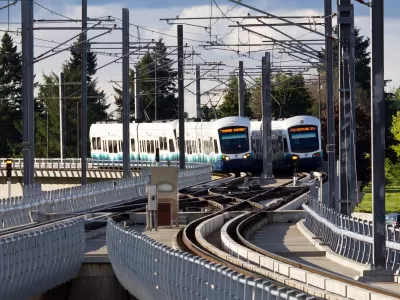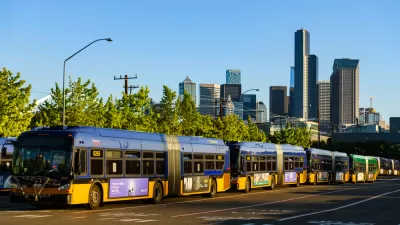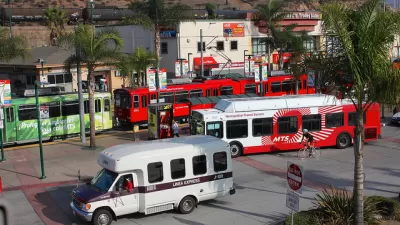Sound Transit is launching a fare-free program for young riders in the hopes of educating and recruiting future riders and making schools and jobs more accessible to transit-dependent youth.

Seattle’s Sound Transit is making transit free for youth starting in September in an effort to improve access to schools, jobs, and other activities for students and reduce fare compliance challenges. As Charles Pekow reports in a piece for Smart Cities Dive, “Sound Transit will recoup the lost revenue through funding the Washington state legislature allocated in March, when it passed the nearly $17 billion Move Ahead Washington mass transportation package.”
After the passage of the bill, the state’s transit agencies have scrambled to implement free transit programs before the October 1 deadline. “Some already provide free or reduced-price fares for youth. Some provide free transit cards; others check student IDs when young people board.” In the Seattle area, “Sound Transit launched the program on Everett Transit in July and will expand it to six other transit systems Sept. 1, with Washington State Ferries joining Oct. 1.” State Senator Marko Liias, chair of the legislature’s transportation committee, “said he expects the initiative will lead more high schoolers to take public transit to school, reducing the need for school buses.”
Based on data from the student program, the state will evaluate the possibility of free or reduced fares for other groups of riders.
FULL STORY: Seattle-area kids can ride transit free starting Sept. 1

Study: Maui’s Plan to Convert Vacation Rentals to Long-Term Housing Could Cause Nearly $1 Billion Economic Loss
The plan would reduce visitor accommodation by 25,% resulting in 1,900 jobs lost.

Placekeeping: Setting a New Precedent for City Planners
How a preservation-based approach to redevelopment and urban design can prevent displacement and honor legacy communities.

Using Old Oil and Gas Wells for Green Energy Storage
Penn State researchers have found that repurposing abandoned oil and gas wells for geothermal-assisted compressed-air energy storage can boost efficiency, reduce environmental risks, and support clean energy and job transitions.

Washington State Plans Ambitious ‘Cycle Highway’ Network
The state is directing funding to close gaps in its existing bike network and make long-distance trips more accessible.

Homeowners Blame PG&E for Delays in ADU Permits
The utility says it has dramatically reduced its backlog, but applicants say they still face months-long delays for approvals for new electrical work.

Rethinking Wildfire Defense: How a Landscape Approach Can Protect Neighborhoods
Post-fire analysis of the Eaton Fire reveals that a landscape approach — including fire-resistant vegetation, home hardening, and strategic planning — can help reduce wildfire risk, challenging assumptions that trees and plants are primary fire hazards.
Urban Design for Planners 1: Software Tools
This six-course series explores essential urban design concepts using open source software and equips planners with the tools they need to participate fully in the urban design process.
Planning for Universal Design
Learn the tools for implementing Universal Design in planning regulations.
Borough of Carlisle
Caltrans
Heyer Gruel & Associates PA
Institute for Housing and Urban Development Studies (IHS)
City of Grandview
Harvard GSD Executive Education
Salt Lake City
NYU Wagner Graduate School of Public Service
City of Cambridge, Maryland





























